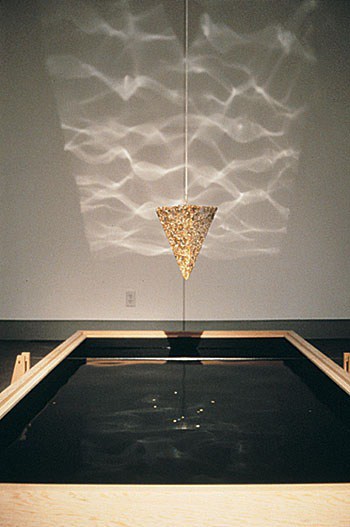The Soul’s Tempo in Four Quartets - Part II
Rebecca Spears
 Read Part I
Read Part I
“The Dry Salvages,” the third poem in Eliot’s Four Quartets, thinks about time from the wilderness of rivers and oceans, drawing parallels to the cycles of life and to eternity. Rhythmically, this poem feels like water lapping at the shore: “Where is an end of it, the soundless wailing”; “where is there an end to the drifting wreckage”; “where is the end of them, the fishermen sailing”; “there is no end, but addition.”
“The Dry Salvages” (1941) evokes Heraclitus’ most famous observation: “One cannot step twice into the same river.” Similarly, in time’s currents, humans are no longer the same travelers they were the moment before; nor will they be the same the next moment. We are ever changing, but this signals our aging as well. Implicit in wilderness is the idea of an older time, before clocks: “The tolling bell / Measures time not our time, rung by the unhurried / Ground swell, a time / Older than the time of chronometers.” This is nature’s movement, something quite larger than ourselves, something we cannot control.
In nature, time is both destroyer and preserver, signified by “the river with its cargo of Dead Negroes, cows and chicken coops.” Here, Eliot wants us to know that agony is timeless; when we are in it, it seems eternal: “People change, and smile: but the agony abides.” Also, “time is no healer”; instead, time always kills the patient. The speaker seeks refuge from agony in prayer, and finally turns away from ancient remedies of magic and sorcery. He concludes that the only way to live timelessly is through prayer and through the saints. “Little Gidding" (1942), the most overtly religious quartet, moves the speaker from the human experience of time to the threshold of timelessness. Little Gidding is a chapel Eliot made pilgrimage to in 1936, when England was nearing war’s threshold. So too, readers enter the poem at a transitory time, “midwinter spring,” “suspended in time,” where “the brief sun flames the ice.” As in Heraclitus, this flash of light compares to insight. Yet this light is also a “pentecostal fire / In the dark time of the year.” We should approach this moment of light prayerfully, Eliot tells us, ready to see our folly and be restored by “that refining fire.” In prayer, a person prepares to cross the threshold and be “transfigured in another pattern,” experiencing visionary detachment that goes beyond desire to love. While history is “a pattern / of timeless moments,” to be transformed people must “arrive where we started from / And know the place for the first time,” “through the unknown remembered gate” (l. 246), to a place and experience humans have only glimpsed on the cave walls.
My afternoon at the Menil that long-ago September, experiencing Mineko Grimmer’s Remembering Plato, the ice melting, the pebbles dropping and producing a watery music, the projected patterns on the walls constantly changing, I think I felt myself approaching a gate that wasn’t yet open to me. I still carry a vivid memory of that day when the experience touched me so deeply. In Four Quartets, Eliot works his way through ideas of memory and its patterns, and suspended time, toward glimpses of eternal forms, and finally, to the gate of timelessness, or eternity. Following the soul’s tempo, the speaker will gain “complete simplicity / (Costing not less than everything) / And all shall be well and / All manner of thing shall be well.”
